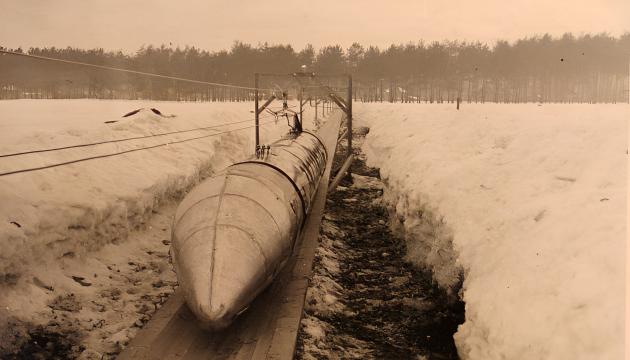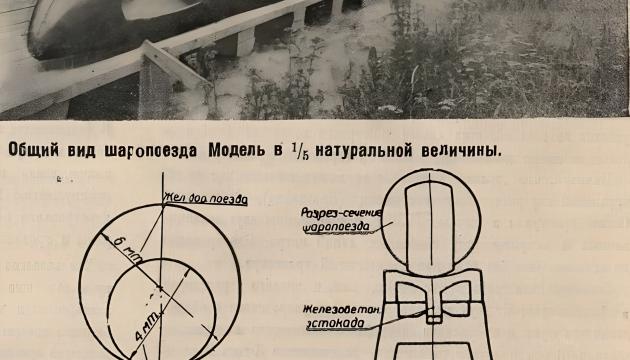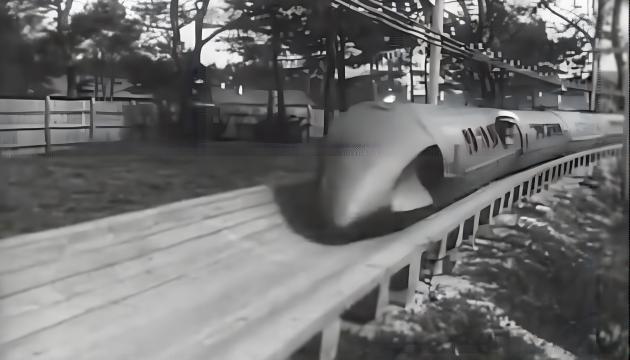Brief Summary:
Invention/Project: Ball Train (high-speed train on spherical/roller bearings in a trough).
Inventor: Engineer Nikolai Grigorievich Yarmolchuk.
Country: USSR.
Development Period: Early 1930s.
Essence: An original high-speed transportation system with carriages moving along a concrete trough on electrically driven bearings.
An ambitious, futuristic engineering project that was not realized due to technical difficulties and high cost. An example of a technological failure or an idea ahead of its time.
Creation History
The idea of the Ball Train belongs to Soviet engineer Nikolai Grigorievich Yarmolchuk. In the early 1930s, during the era of industrialization and belief in technological progress, he was inspired by the idea of creating a fundamentally new type of high-speed ground transportation. Yarmolchuk developed a detailed project and even built a working model at a scale of 1:5, which successfully moved along a special track. A small experimental section of the track was also laid near Moscow (in the area of Severnoe Butovo), but the project did not progress further than that.
Operating Principle
The concept of the Ball Train was radically different from traditional railways. Instead of wheels rolling on rails, streamlined carriages were proposed to move inside a semi-circular concrete trough. The carriages would be supported by large spherical or roller bearings located under the carriage floor. These bearings were to be driven by powerful electric motors, allowing the train to reach a calculated speed of up to 300 km/h – an incredible figure for the 1930s.
Claimed Advantages
- Ultra-high speed: Up to 300 km/h, which far exceeded the speeds of conventional trains of that time.
- Smooth ride: Theoretically, movement on ball bearings over a smooth trough could be smoother than on wheels over rails.
- Futuristic: The project looked like transport of the future, a symbol of technological superiority.
- All-weather (theoretically): The closed trough could protect the path from snow and icing.
Why Did It Fail?
- Technical difficulties: Ensuring the stability of the carriage on balls at such speeds, creating a reliable and powerful drive for the bearings, the problem of wear and tear on the balls and the trough, and the need to build a perfectly smooth and hermetically sealed (at the joints) trough – all these were extremely complex engineering tasks for the technologies of the 1930s.
- Astronomical cost: Laying a completely new infrastructure (troughs) across the country would require gigantic investments, which were beyond the reach of even the ambitious Soviet economy.
- Priorities: The approach of World War II shifted the focus of industry to military needs, and funding for such exotic projects was cut.
- Competition: The development of traditional railways and aviation offered more pragmatic solutions to transportation challenges.
Ahead of Its Time?
The very idea of high-speed ground transportation undoubtedly was ahead of its time. The desire to overcome the speed barriers of traditional trains was very progressive. However, Yarmolchuk's specific technical solution (ball bearings in a trough) was probably a technological dead end or at least required a level of materials science and control systems unavailable in that era.
Can It Be Revived?
Reviving the Ball Train in its original form is extremely unlikely. The problems with wear, stability, and infrastructure costs would remain unsolved, and modern technologies (maglev, high-speed trains on wheel pairs) offer more efficient and proven solutions. However, the idea of searching for *alternative* principles of movement for high-speed transportation is alive and embodied in projects like Hyperloop. The lesson of the Ball Train lies in the courage of engineering exploration, even if the specific path turned out to be incorrect.
WTF Factor
Imagining a train in the 1930s rushing at 300 km/h not on rails but **inside a concrete tube on giant electric ball bearings** is already mind-blowing! It looked like a living illustration from a science fiction novel. The contrast between this futuristic picture and the technological realities of the era (steam locomotives, propeller planes) constitutes the main WTF effect.


